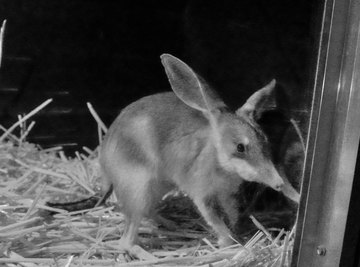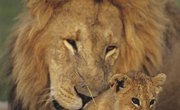
Bilbies (Macrotis lagotis) are small, nocturnal marsupials with long ears that resemble those of rabbits with a long snout that looks like a possum or mouse.
As Australian natives, bilbies have many names, including the greater rabbit-bandicoot, dalgyte and greater bilby. Bilbies are in the family Thylacomyidae (order Peramelemorphia).
Bilby Life Span
Bilbies live about seven years but have been known to live up to 11 years old in captivity. Female bilbies are sexually mature at six months old, while males can start having babies at eight months old.
The lifespan of wild bilbies is not entirely known. In the wild bilbies are common prey for introduced feral cats and foxes.
Breeding Behaviors
In captivity, bilbies are capable of breeding at any time and have up to four litters per year. However, in the wild, they breed from March to May.
Bilbies either live a solitary life or share their nest with a mate and offspring. They create their nests inside the burrows that they live in during the day.
Gestation Time
Gestation times in marsupials is shorter than placental mammals. Placental mammals nourish young via blood supplies while marsupial mammals differ in that they have a yolk-type placenta. Tiny marsupial babies then crawl from the mother's birth canal to the teats inside her pouch to continue development.
While the gestation time inside their mother is only 14 days, baby bilbies spend another 11 to 12 weeks attached to one of their mothers eight teats.
Baby Bilbies
Bilbies are usually born in litters of one or two babies and occasionally three or four. A baby bilby is called a joey. Female bilbies have a backward facing pouch, opposite to a kangaroo, which protects her young from dirt while she is busy digging burrows and foraging for food.
The joeys detach from their mother's teats between 11 and 12 weeks. Joeys are weaned from their mother's milk and begin eating solid foods by 15 weeks old.
Juvenile Bilbies
Bilbies are omnivores who get most of their water requirements from their diet. They forage for plant bulbs, grass seeds, fruit, fungi, insects, worms, small lizards and other animals with their long sticky tongues.
Juvenile bilbies stay in the nest with their mothers for several weeks after they are weaned. The juveniles remain in the nest while the mother brings them food at night. Once young bilbies are ready, they leave the nest to create their burrows, have babies and complete the bilby life cycle.
Bilby Burrows
Bilbies use their burrows during the day for protection from heat and predators. Burrows are usually around two to three meters deep in a spiral formation. The opening for burrows is generally placed next to grass tussocks or termite mounds.
When predators attempt to dig bilbies out of their burrows, the bilby uses their powerful digging skills to make their hole deeper and escape the predators' advances. Bilbies continually repair and re-use their burrows for years.
Bilby Conservation
Before the arrival of Europeans, bilbies were widespread in Australia, covering about 70 percent of the landscape. Now they are considered vulnerable and their distribution has decreased by 80 percent.
The decline in population is due to habitat loss, land conversion and increased predation. In addition to cats and foxes, bilbies are predated on by eagles, pythons, monitor lizards and dingoes.
Conservationists perform distribution surveys to monitor wild bilby populations and determine historic bilby habitats. Bilbies are usually associated with habitats that have sand, soil, sandy clay or gravel type substrates that they can easily burrow in.
Bilbies are also associated with habitats that contain certain Acacia spp. and Senna spp. trees that they use for food. This type of habitat and distribution information helps conservationists plan habitat restoration and bilby reintroduction projects.
References
About the Author
Adrianne Elizabeth is a freelance writer and editor. She has a Bachelor of Science in Ecology and Biodiversity, and Marine Biology from Victoria University of Wellington in New Zealand. Driven by her love and fascination with all animals behavior and care, she also gained a Certificate in Captive Wild Animal Management from UNITEC in Auckland, New Zealand, with work experience at Wellington Zoo. Before becoming a freelance writer, Adrianne worked for many years as a Marine Aquaculture Research Technician with Plant & Food Research in New Zealand. Now Adrianne's freelance writing career focuses on helping people achieve happier, healthier lives by using scientifically proven health and wellness techniques. Adrianne is also focused on helping people better understand ecosystem functions, their importance, and how we can each help to look after them.
